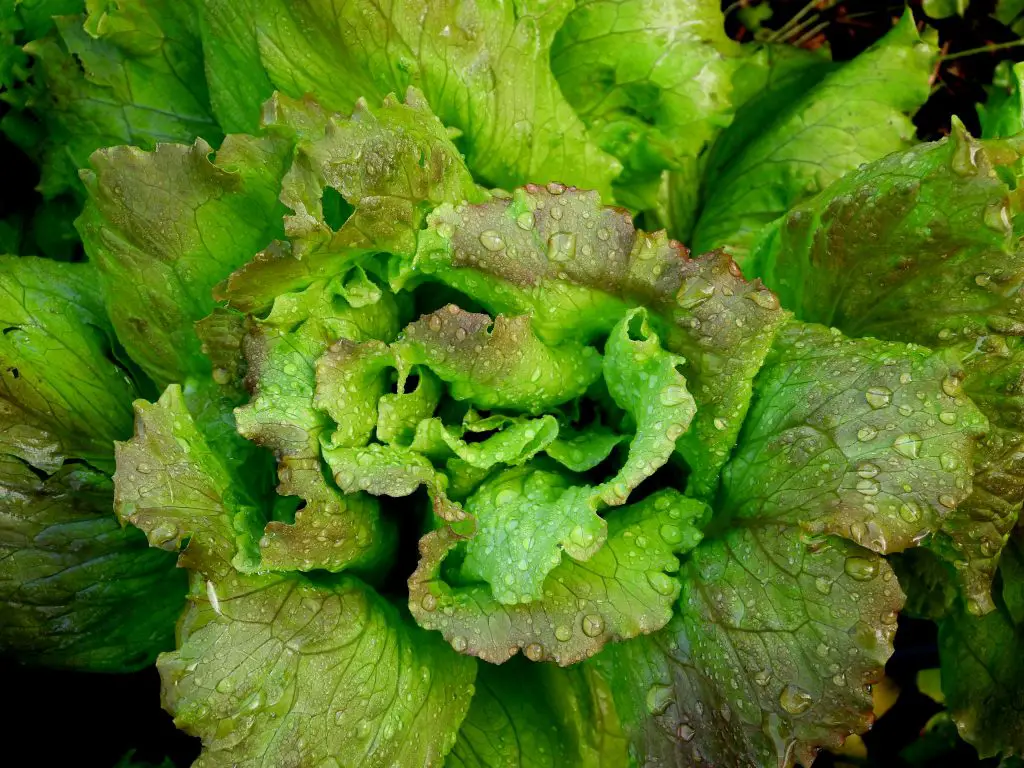Can You Eat Lettuce After It Has Gone To Seed? Lettuce is one of those plants that goes to seed very readily particularly in hot weather. So when the plant bolts can you still eat the lettuce leaves? Or are they poisonous?
Lettuce leaves can be eaten after the plant bolts, however, the leaves become extremely bitter and are generally not pleasant to eat. This bitter taste often begins to appear before there is any sign that the plant is going to put up a flower stalk. As such if you were growing your own lettuce it is advisable always to taste it before you bring it in to make a salad.
The reason why lettuce becomes bitter is that it contains specialized cells that produce a milky latex. This latex contains several compounds called sesquiterpene lactones that have a bitter taste and generally spoil the flavor of the lettuce.
These chemicals are also known to create the bitter flavor that is synonymous with chicory and radicchio. Over the centuries people have selectively bred lettuce varieties that have a reduced degree of latex production which creates a milder taste.

And even today there is ongoing research that is continuing to look for lettuce varieties that reduce the bitter flavor. One example of this is from a 2009 Korean study that looked at a range of different lettuce varieties and their degree of bitterness.
This study also showed that the bitter flavor increased dramatically once the plant transitioned from producing leaves two creating flower heads. They also found that the concentration of sesquiterpene lactones was highest in the leaves on flower stalks. However, they also detected changes in the chemical composition of the plants prior to any signs of flowering occurring which is consistent with my own personal experience.
How To Reduce The Chances Of Lettuce Bolting
One of the most common problems with growing lettuce is that it will constantly bolt particularly in summer when the weather is warm. Bolting is a natural part of the plant cycle, so any measures that you take can delay the bolting of the plant, but it will not stop it.
One of the most common causes of bolting is that the plant becomes stressed due to a lack of water. One of the most important things that you can do to reduce the chances of bolting is to water the plant regularly and also mulch around it to ensure that the soil retains moisture to reduce the chances of stress.
The degree of stress can also increase when the weather is warm which means that one of the most common problems in summer is maintaining a continuous supply of good quality lettuce leaves. To reduce the rate of bolting one of the other strategies that can be used is to plant the lettuce in complete shade as this will reduce the peak temperatures that the plant is exposed to and also reduce the rate of bolting.

Is Lettuce That Has Bolted Useful For Anything?
Lettuce that has bolted is no longer useful for eating leaves in salads, however, the plant is not entirely useless. One of the things that you can use it for is to collect the seed. To do this allow the plant to flower and then dry out on the plant.
Once the seed heads have dried out completely the easiest way to collect the seed is to remove the entire flower head and place it into a paper bag. You can then crush the flower heads to release the seeds which can be stored for next year.
The other things that bolted flower heads can be used for is to feed the leaves to chickens as they are not fussy about whether the leaves are bitter or not. Alternatively, the plants can also just be used to fill up your compost heap.
How To Maintain A Continuous Supply Of Lettuce In Your Garden
To maintain a continuous supply of lettuce in your garden there are a few tricks that you can employ that will increase your chances of achieving this. The first thing is to ensure that you have a broad number of different varieties in your garden at any one time. The reason for this is that lettuce varieties tend to become bitter at different rates. Having several different varieties is beneficial as it will help to ensure that at least some of the lettuce you are growing is palatable.
The easiest way to achieve this is not to buy 5 or 10 different packets of seed and sow them individually, but, instead you are better off purchasing a salad mix that will contain 4 to 5 different varieties in a single packet of seeds.
This will give you the variety that you want without the hassle of having lots of different seed packets lying around. However, you may need to experiment with the particular seed blends that are available on the market to find one that you really like as some are better than others. We recommend trying Seed Now because they have a broad range of individual varieties as well as some blends which are worth giving a go.
The next important tip is to sow seeds regularly to ensure that you always have a new lot of lettuce coming up throughout the season. As people often get busy there is a tendency to forget to sow seeds often enough which inevitably results in there being periods where there is not enough lettuce. This usually happens at the height of summer when the plants bolt relatively quickly.
A simple way to avoid this issue is to sow seeds each time that the previous lot is ready to plant out into the garden. I find this method works well because the rate of growth varies throughout the year which means that the rate of planting seeds also varies.
In hotter conditions, seed sowing will occur more frequently which will increase your chances of maintaining a constant supply.
The other thing that we recommend when planting let out into the garden is to vary where you place the plants in the garden. By having some of the crop in full sun and some in partial shade this varies the rate of growth within the crop ensuring that there is always something available to pick.
The last thing that is really important to maintain a constant supply is to be absolutely ruthless with the removal of plants that are no longer producing edible leaves as this will take up valuable garden space that can be used for other crops.
I hope you found the tips in this article useful. Good luck with maintaining a constant supply of lettuce. If you have any questions or comments please leave them in the section below.
Feature Image “Lettuce gone to seed” by John and Anni is licensed under CC BY-NC-SA 2.0
Relevant Articles
How Many Times Can You Harvest Lettuce? (It’s More Than You Think)
How Can You Tell The Difference Between Cabbage And Lettuce?
Is Kale Lettuce? Is There A Difference?

